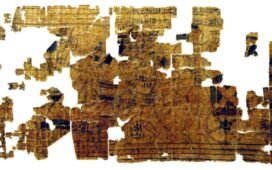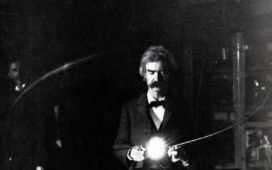No pop music can have inspired more scrutiny than that of the Beatles. Of course, intense and sustained attention has been paid to every aspect of the band’s existence — and, in the case of Paul McCartney, his purported non-existence as well. The theory that he actually died in the nineteen-sixties and was thereafter secretly played by a double has demonstrated such pop-cultural staying power that even those who barely know the Beatles’ music make reference to it. The phrase “Turn me on, dead man” now floats free of its origin, an act of creative listening applied to “Revolution 9” played backwards.
The idea, as explained in the Vinyl Rewind video above, is that “after an argument during a Beatles recording session on November 9th, 1966, Paul McCartney sped off in his car, only to be decapitated in an auto accident when he lost control of his vehicle. The U.K. security service MI5 advised the band to find a replacement, for they feared that if the news of Paul’s death got out, mass hysteria would spread among Beatles fans, leading to civil unrest and, possibly, mass suicide.” The hunt for a Paul lookalike turned up “a Scottish orphan named William Shears Campbell, also known as Billy Shears.”
That name will sound familiar to even casual Beatles listeners, announced as it is so prominently, and so early, on Sgt. Pepper’s Lonely Hearts Club Band. The album’s cover, too, proved to be a fount of imagery suggesting that the rumor of Paul’s death, which had been referenced in an official Beatles publication in 1967 specifically to dispel it, was actually true. A couple of years later, a Detroit radio DJ and a University of Michigan student-journalist got the story into wide circulation. No one clue — the recurring shoelessness of Paul or his impersonator, the death-of-Oswald lines from King Lear incorporated into “I Am the Walrus,” the car wreck described in “A Day in the Life,” the license-plate of the VW on Abbey Road’s cover — was dispositive, but eventually, they added up.
They added up if you were expressly looking for evidence of Paul’s death and substitution: engaging in pareidolia, in other words, the tendency to perceive meaningful patterns in random noise, or in this case a range of minor, non-orchestrated details across pieces of media. Given the Beatles’ personalities, nobody would put it past them to make cheeky hidden references to exactly what they weren’t supposed to talk about, but anyone familiar with the music business would also suspect that Capitol Records had no interest in putting a stop to a false rumor that was generating a profit. It’s certainly a stretch to imagine that someone who just happens to look like Paul McCartney would also be willing and able to carry on the man’s solo career for decade after decade. But then, the history of popular music is full of lucky men, and maybe — just maybe — Billy Shears was among the luckiest.
Related content:
The Paul McCartney is Dead Conspiracy Theory, Explained
Hear The Beatles’ Abbey Road with Only Paul McCartney’s Bass: You Won’t Believe How Good It Sounds
Based in Seoul, Colin Marshall writes and broadcasts on cities, language, and culture. His projects include the Substack newsletter Books on Cities and the book The Stateless City: a Walk through 21st-Century Los Angeles. Follow him on the social network formerly known as Twitter at @colinmarshall.















